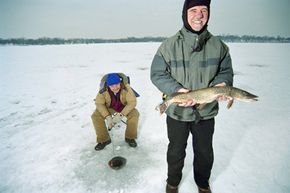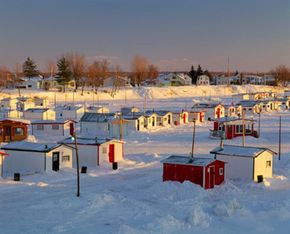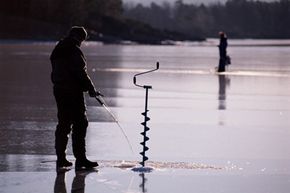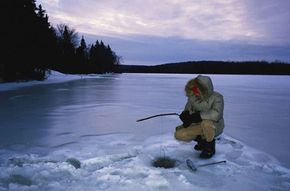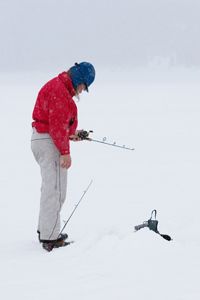It's the middle of winter, and it's far too cold outside to play golf or shoot some hoops. So what do you do? How about grabbing a few buddies, hauling a portable shelter onto the middle of a frozen lake, drilling a hole in the ice and sitting around drinking beer while you wait for the fish to bite?
Ice fishing is as much about camaraderie and getting in a little recreation during the frigid winter months as it is about the sport of fishing. For purists, ice fishing is as basic as making a hole, setting up a line and sitting on a stool waiting for the fish to bite. Those who need a few creature comforts build more robust ice houses (some fully stocked with refrigerators and satellite TVs) to keep them busy until the fish decide to make an appearance.
Advertisement
Ice fishing has come a long way since the time native peoples began cutting holes into the frozen Great Lakes to find food. While their goals were purely sustenance-driven, modern ice fishing is mainly about sport (although many people do eat what they catch).
Ice fishing is popular in northern Europe, as well as across North America (Alaska, Minnesota, Wisconsin, Vermont, New Hampshire, Ohio, New York and Canada). Some of the most popular North American ice-fishing lakes are Lake Simcoe in Canada (the self-proclaimed "ice-fishing capital" of the east), Mille Lacs Lake in Minnesota (where, in a typical winter, some 5,000 shelters crowd the ice), Lake Champlain in New York, Lake Houghton in Michigan and Lake Winnipesaukee in New Hampshire.
So how do you stay warm when you're fishing on a frozen lake? What equipment will you need? And is ice fishing dangerous? You'll find out in this article.
Advertisement
